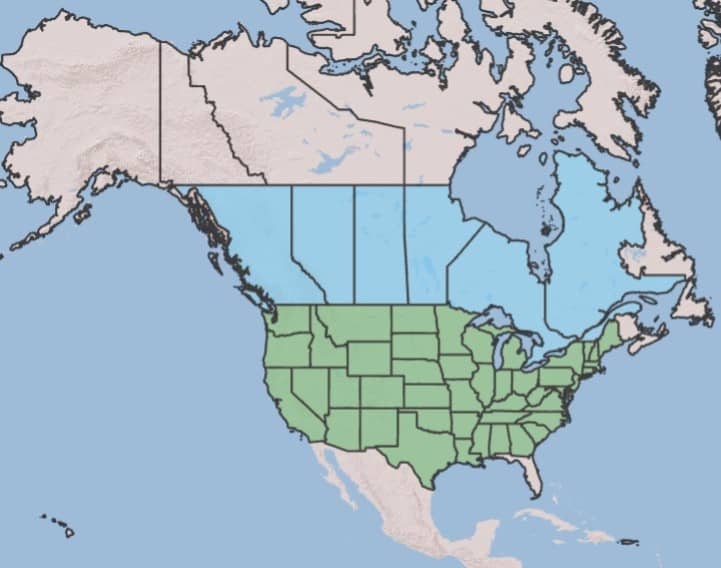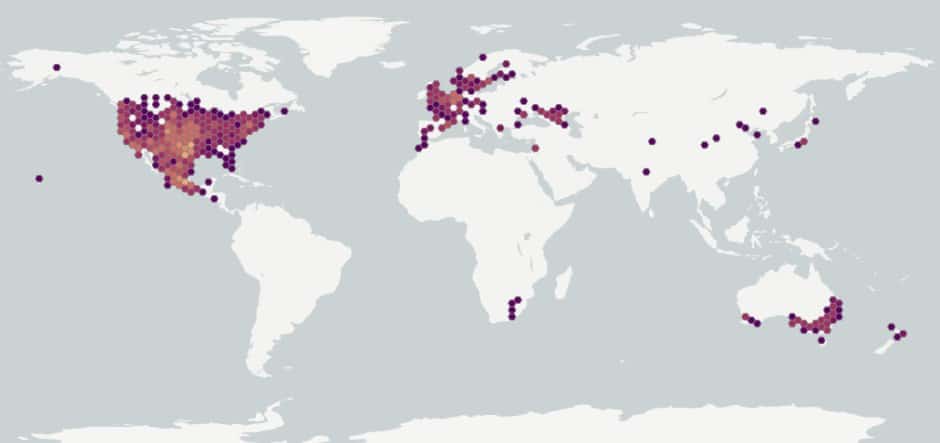Solanum rostratum
Explore More :
Explore plus :
Overview
Aperçu
Regulation :
Remarques Réglementation:
- Quarantine lists of countries e.g. China *may be updated without notice
Regulation Notes:
On quarantine lists of countries e.g. China*.
*Quarantine lists of countries may be updated without notice.
Distribution :
Répartition :
This species is native to Mexico and the United States (USDA-ARS 2017). It is widely naturalized around the world (e.g., Europe, Asia, Oceania) (CABI 2017).
Habitat and Crop Association :
Habitat et Cultures Associées :
Buffalobur can be found in cultivated fields, abandoned fields, gardens, pastures, dry streambeds, railway lines, roadsides and disturbed areas (Darbyshire 2003; CABI 2017).
Economic Use, cultivation area, and Weed Association :
Utilisation économique, zone de culture et association de mauvaises herbes :
Duration of Life Cycle :
Durée du cycle vital:
Annual
Dispersal Unit Type :
Type d’unité de dispersion :
Seed
General Information
RENSEIGNEMENTS GÉNÉRAUX
Buffalobur is a fast-growing, spiny weed with toxic berries (CABI 2017). The berries may be dispersed by humans, mammals, water, and even wind, as the plants can become tumbleweeds. The berries are dehiscent, allowing the species to self-propel its seeds (CABI 2017).
.Identification
Identification
-
Berry
Shape
- Berry is globose
Surface Texture
- Berry is covered with long spines and has stellate hairs on its surface
Colour
- Berry is green when immature and brown when mature
Other Features
- Intact berries not commonly seen in seed samples since they split at maturity
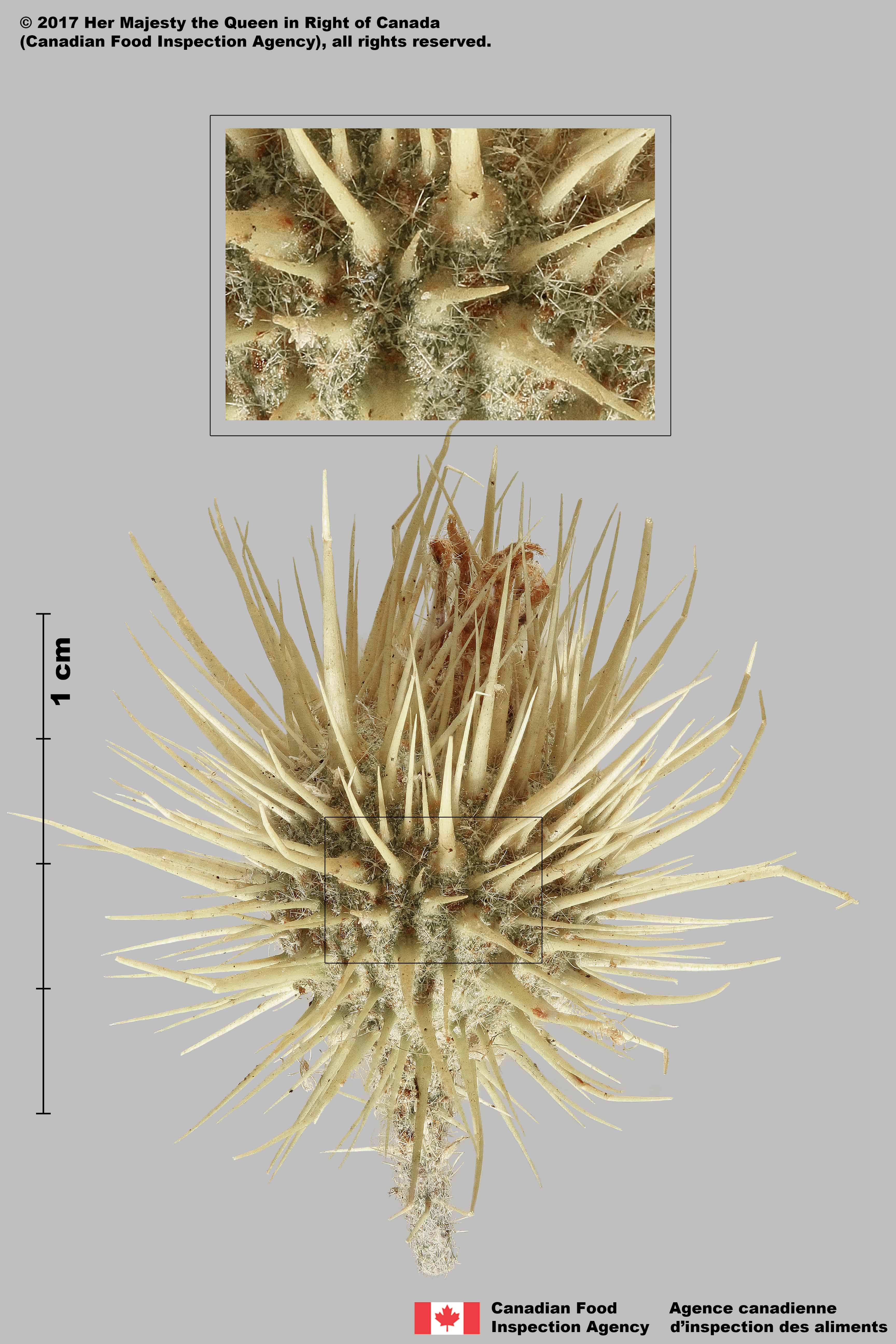
Solanum rostratum berry

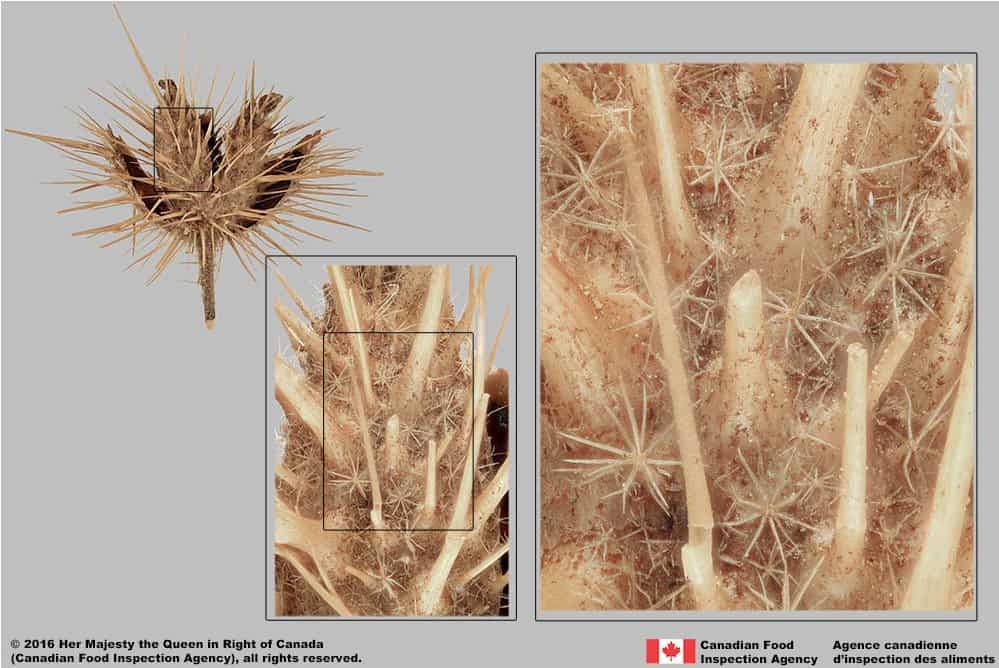
-
Seed
Size
- Seed length: 1.7 – 2.1 mm (average: 1.9 mm) ; width: 1.3 – 1.7 mm (average: 1.5 mm)
Shape
- Seeds are compressed and D-shaped with wavy margins
Surface Texture
- Seeds have a deeply pitted surface that gives a lava rock appearance
Colour
- Seeds are dull and black in colour
- Some seeds are covered in a brownish crust that is iridescent when thin
Other Features
- Hilum is on the narrow edge of the seed and it is round and open
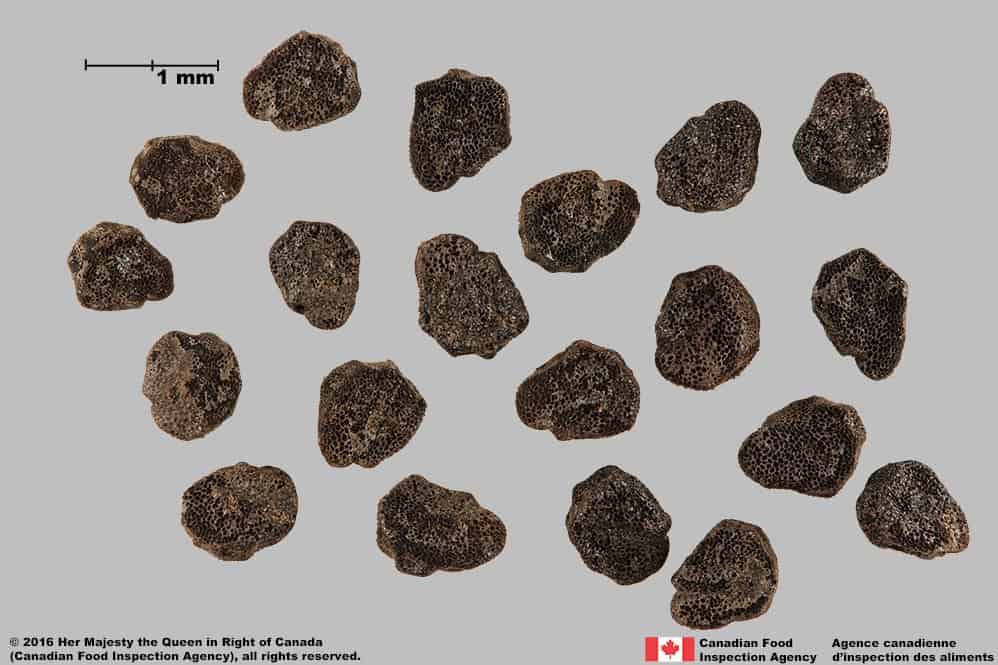
Buffalo bur (Solanum rostratum) seeds

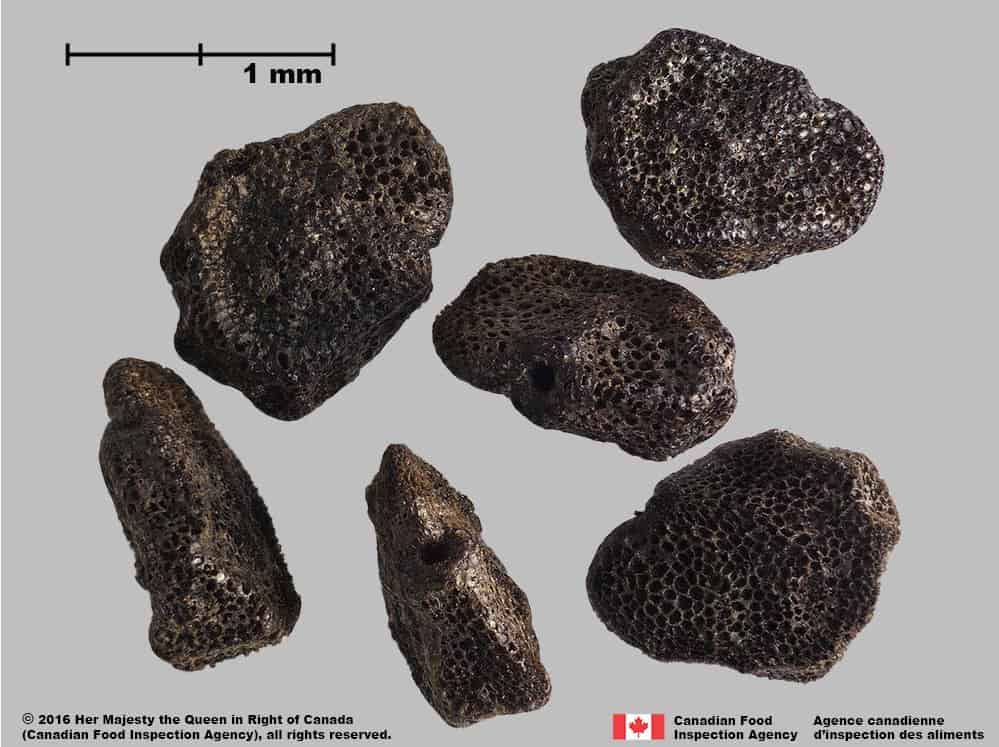
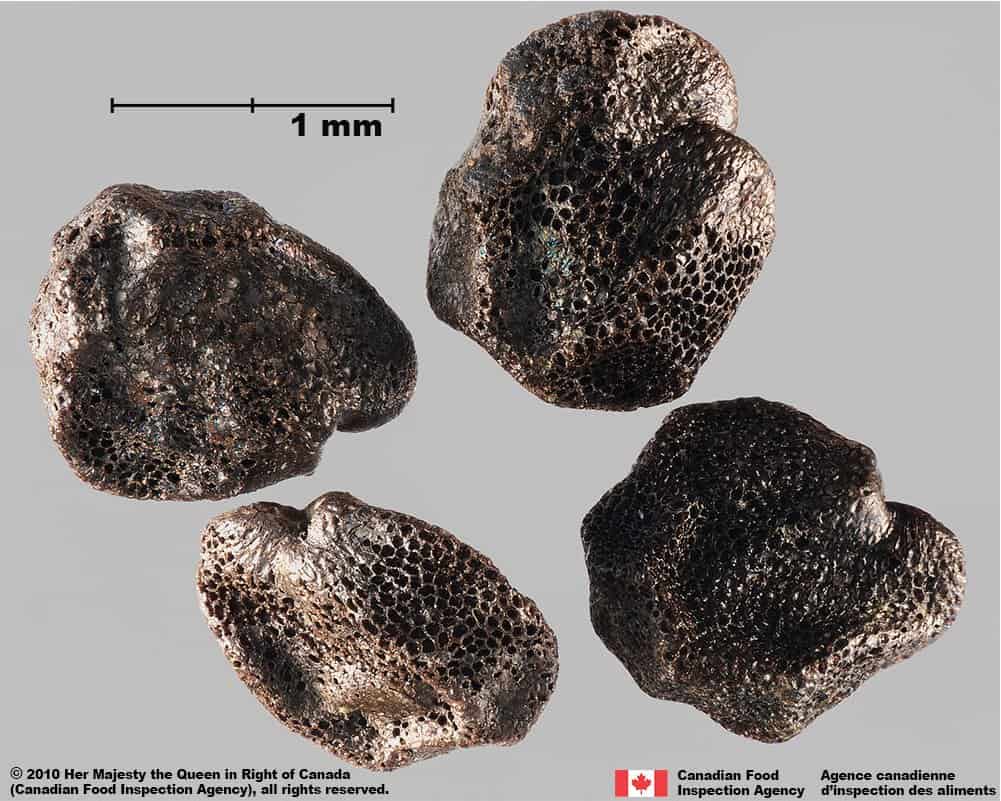
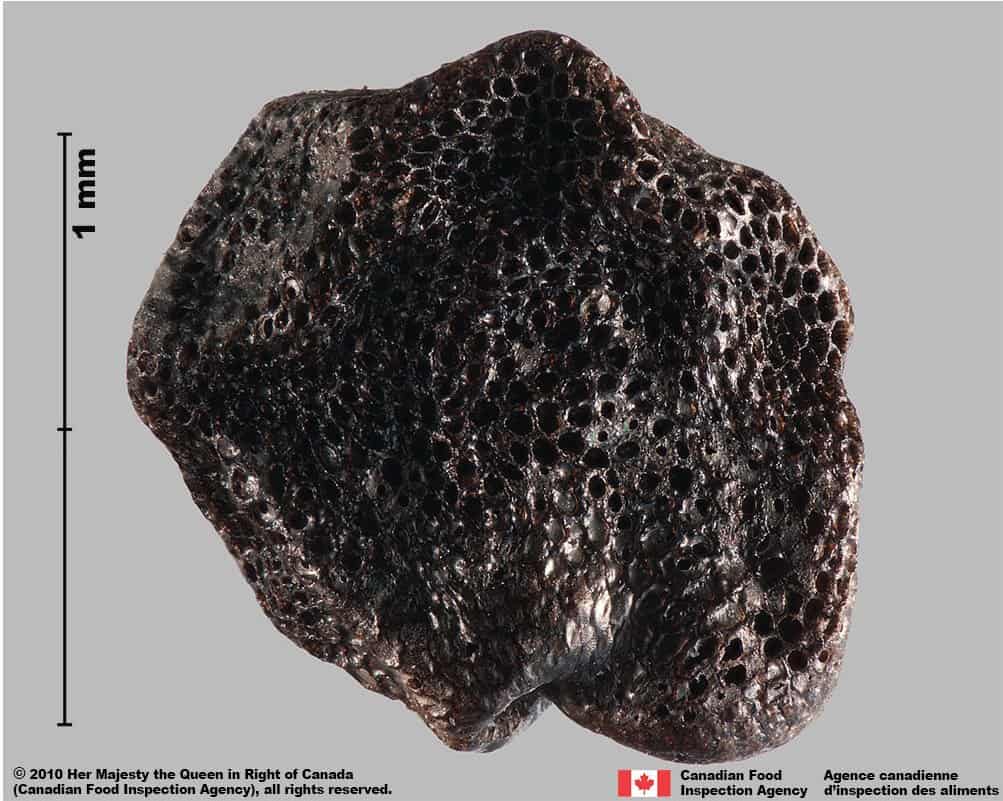
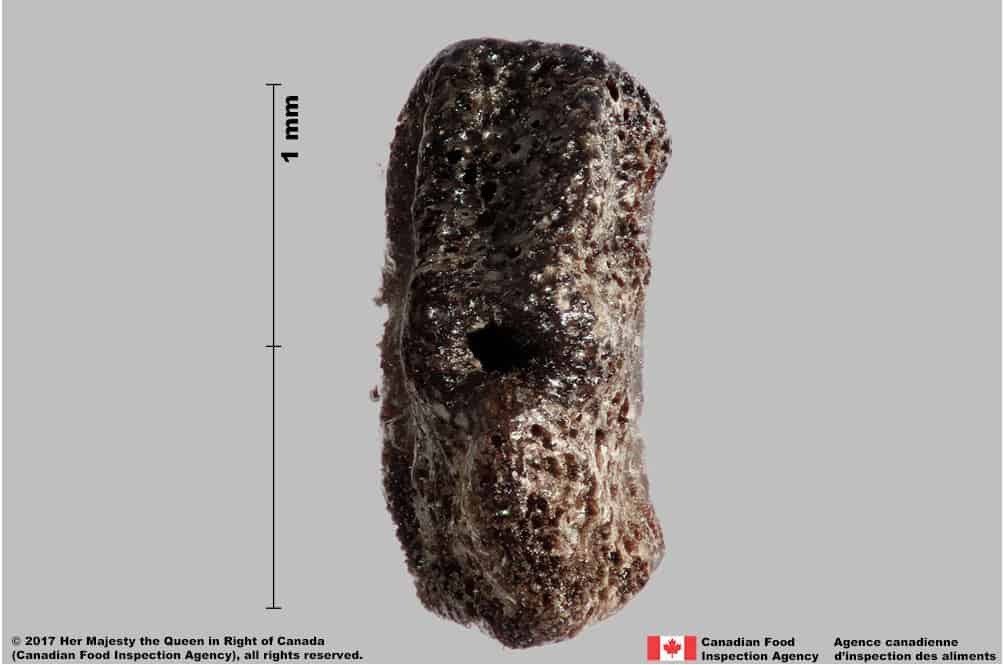
Identification Tips
CONSEILS POUR L’IDENTIFICATION
Additional Botany Information
AUTRES RENSEIGNEMENTS BOTANIQUES
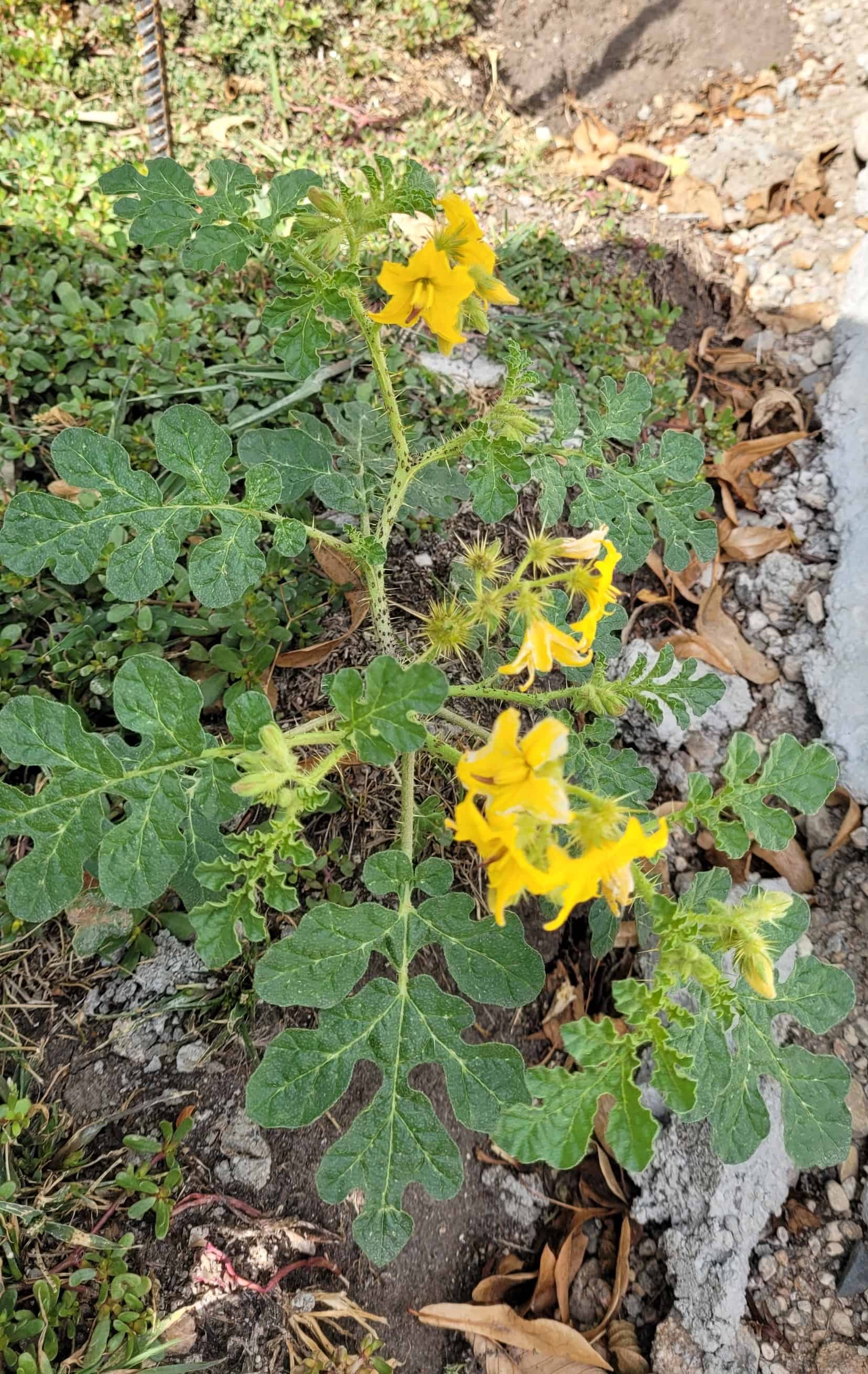
Solanum rostratum plant growing in yard, Saskatoon, Saskatchewan, Canada (Angela D. Salzl)

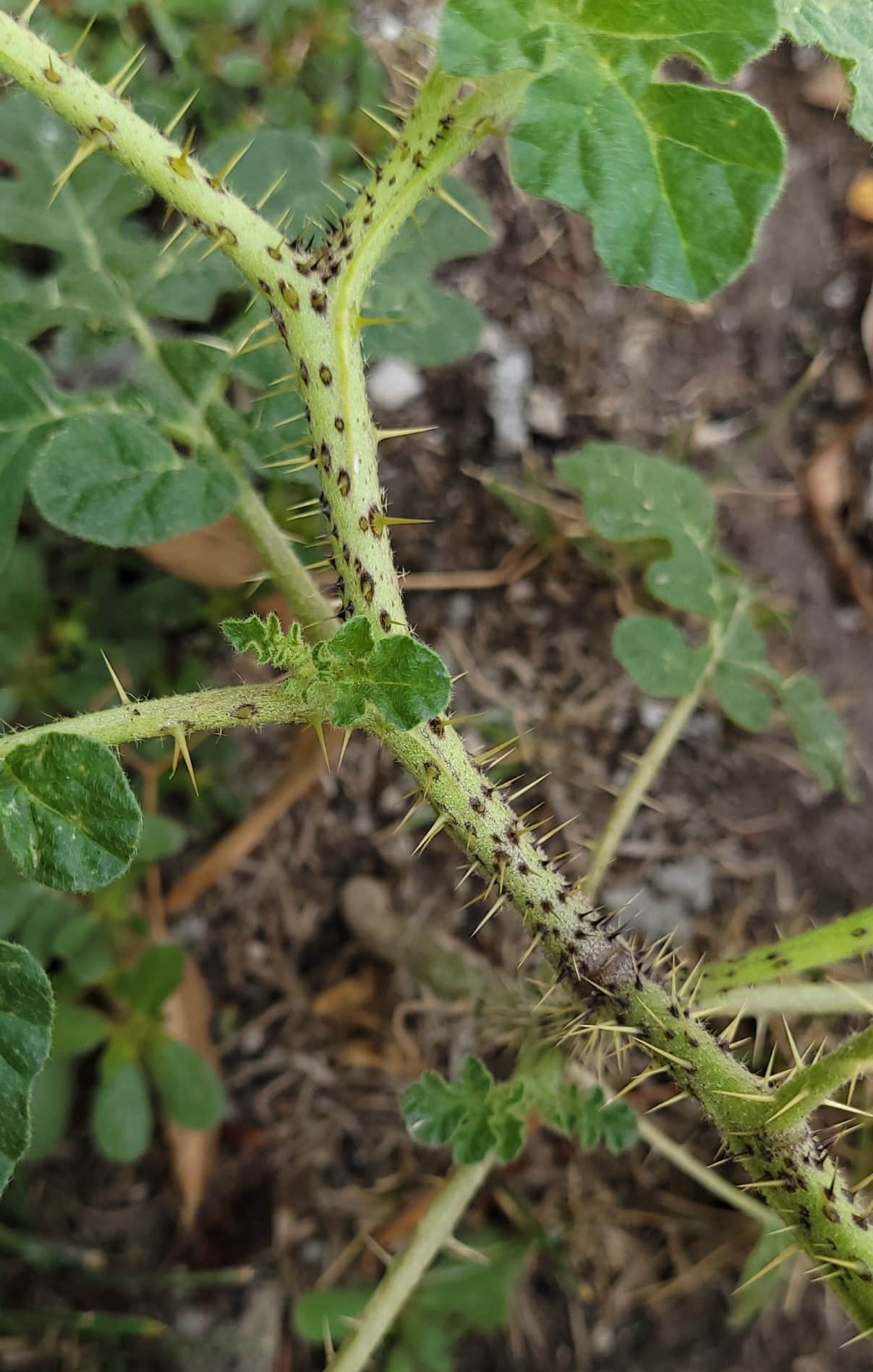
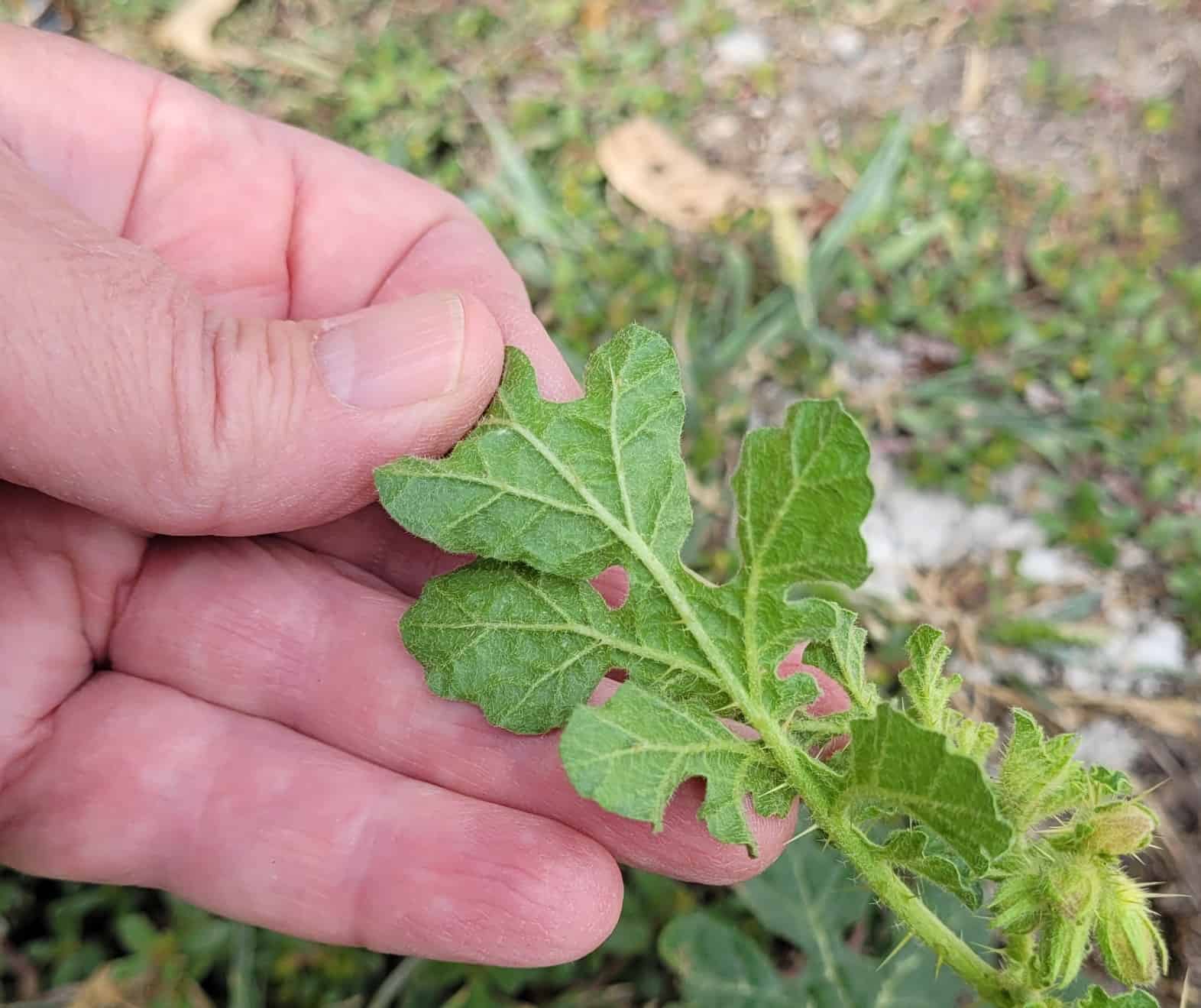
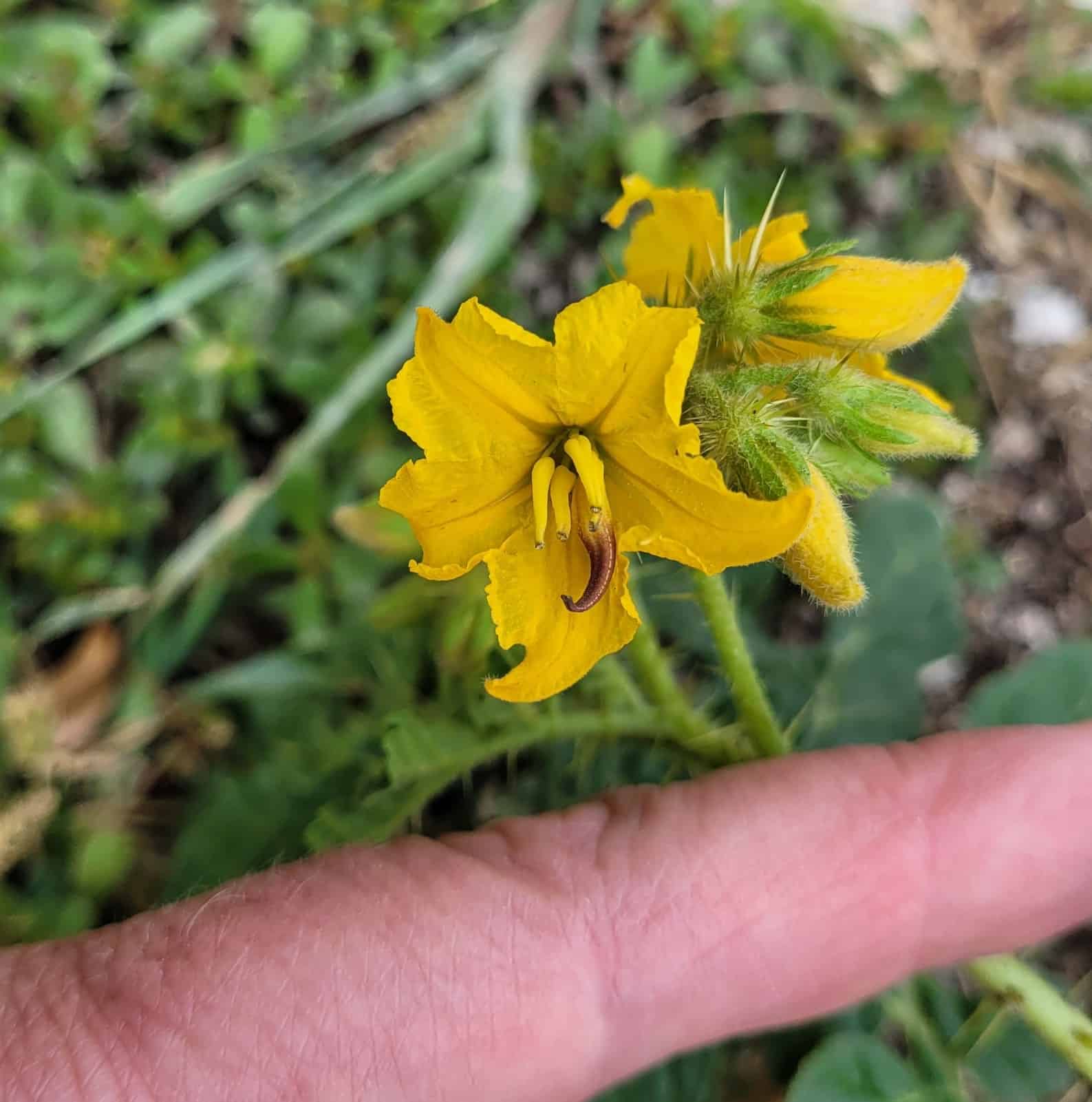
Similar Species
ESPÈCES SEMBLABLES
Similar species are based on a study of seed morphology of various species, and those with similar dispersal units are identified. The study is limited by physical specimen and literature availability at the time of examination, and possibly impacted by the subjectivity of the authors based on their knowledge and experience. Providing similar species information for seed identification is to make users aware of similarities that could possibly result in misidentification.
Datura stramonium (jimsonweed)
Jimsonweed seeds have a similar shape, colour, and pitted surface as buffalobur.
Jimsonweed seeds are generally larger (average length: 3.6 mm; width 2.9 mm) than buffalobur, have shallow pits on the surface, and a triangular shaped hilum that is filled with white to pinkish tissue, unlike the round, open hilum of buffalobur.
Click to select species
Cliquez pour sélectionner les espèces
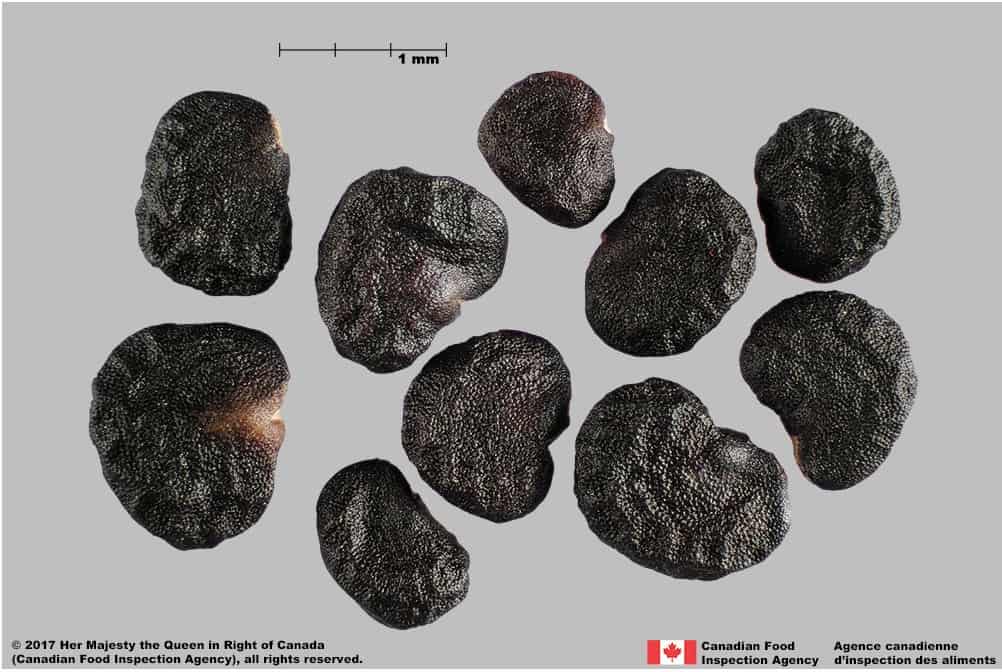
Datura stramonium
Comparison Window
Fenêtre de comparaison
MAIN SPECIES
ESPÈCES PRINCIPALES
Solanum rostratum

Solanum rostratum
Solanaceae
Buffalo bur (Solanum rostratum) seeds
MAIN SPECIES
ESPÈCES PRINCIPALES
Solanum rostratum

Solanum rostratum
Solanaceae
Buffalo bur (Solanum rostratum) seeds
MAIN SPECIES
ESPÈCES PRINCIPALES
Solanum rostratum

Solanum rostratum
Solanaceae
Buffalo bur (Solanum rostratum) seeds
MAIN SPECIES
ESPÈCES PRINCIPALES
Solanum rostratum

Solanum rostratum
Solanaceae
Buffalo bur (Solanum rostratum) seed
MAIN SPECIES
ESPÈCES PRINCIPALES
Solanum rostratum

Solanum rostratum
Solanaceae
Buffalo bur (Solanum rostratum) seed, hilum view
MAIN SPECIES
ESPÈCES PRINCIPALES
Solanum rostratum

Solanum rostratum
Solanaceae
Buffalo bur (Solanum rostratum) berry
MAIN SPECIES
ESPÈCES PRINCIPALES
Solanum rostratum

Solanum rostratum
Solanaceae
Solanum rostratum berry
SIMILAR SPECIES
ESPÈCES SEMBLABLES
Datura stramonium

Datura stramonium
Solanaceae
Jimsonweed (Datura stramonium) seeds
SIMILAR SPECIES
ESPÈCES SEMBLABLES
Datura stramonium
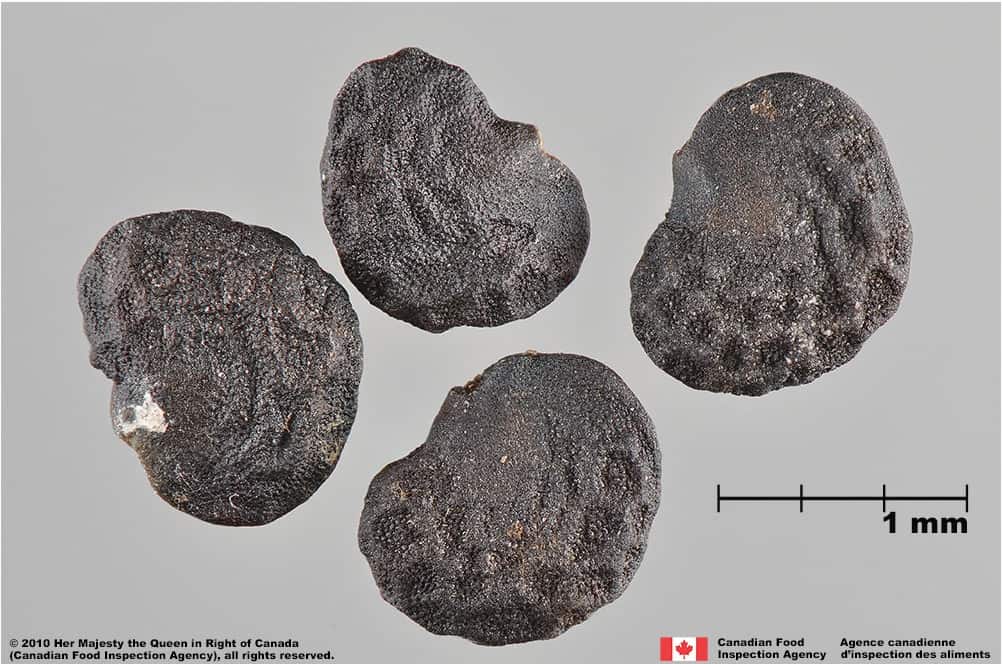
Datura stramonium
Solanaceae
Jimsonweed (Datura stramonium) seeds
SIMILAR SPECIES
ESPÈCES SEMBLABLES
Datura stramonium
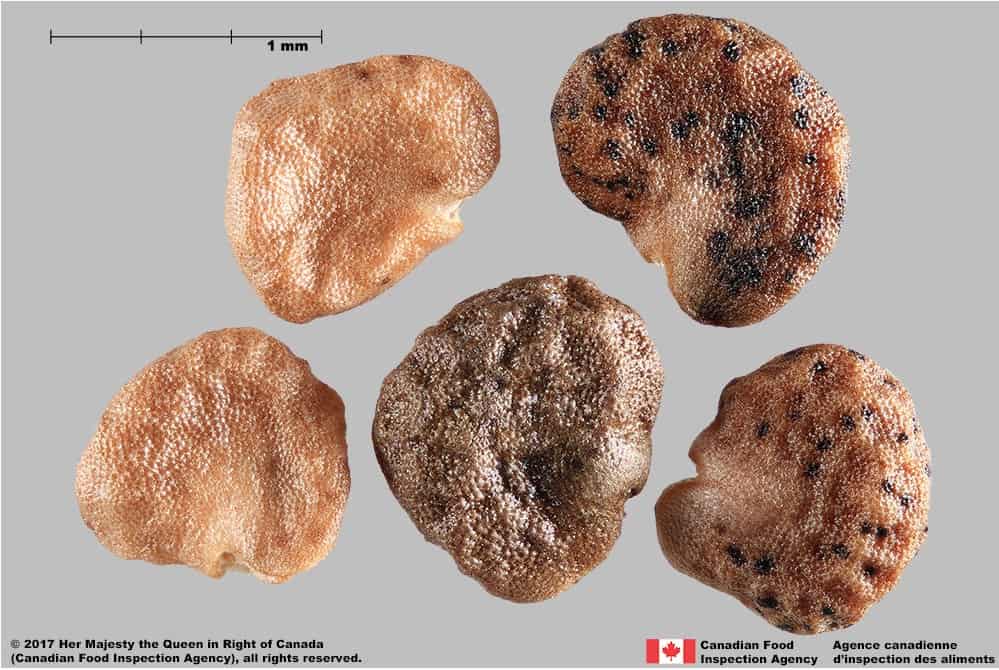
Datura stramonium
Solanaceae
Datura stramonium (jimsonweed) seeds (immature)
SIMILAR SPECIES
ESPÈCES SEMBLABLES
Datura stramonium
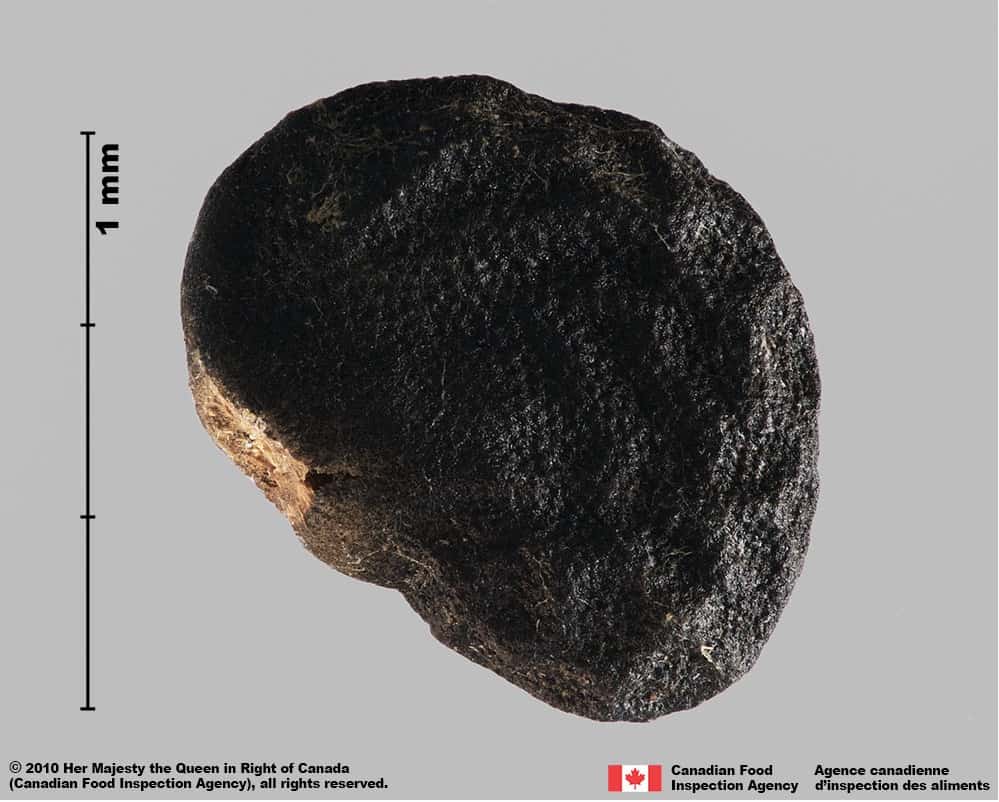
Datura stramonium
Solanaceae
Jimsonweed (Datura stramonium) seed
SIMILAR SPECIES
ESPÈCES SEMBLABLES
Datura stramonium
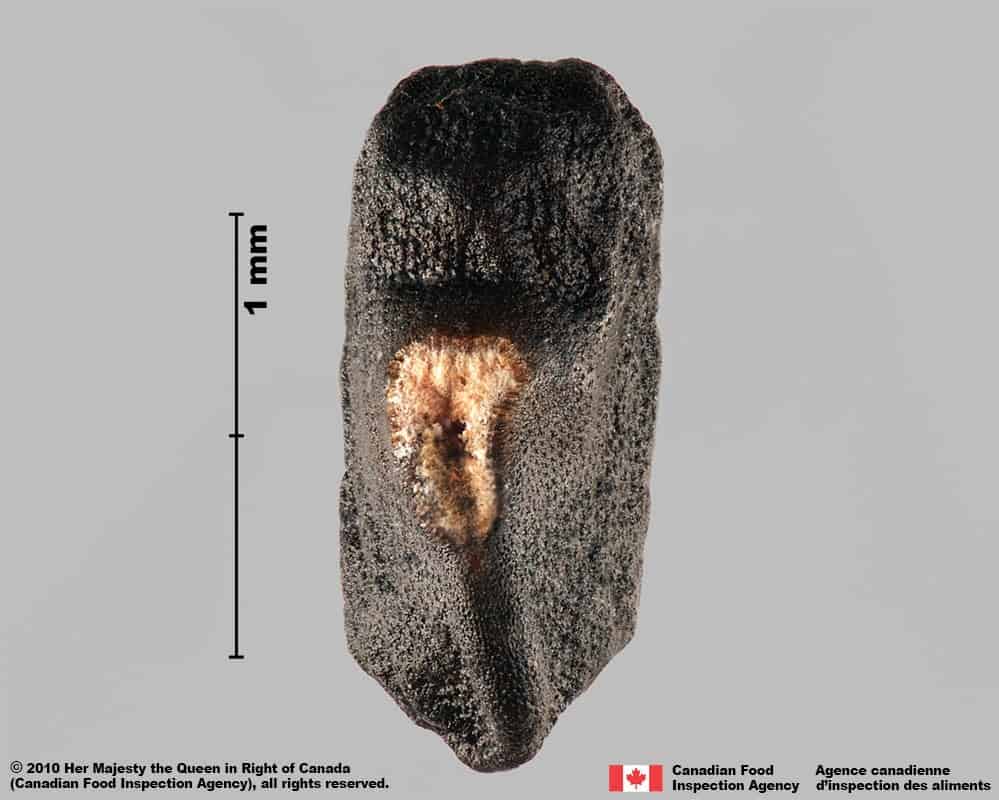
Datura stramonium
Solanaceae
Jimsonweed (Datura stramonium) seed, hilum view
SIMILAR SPECIES
ESPÈCES SEMBLABLES
Datura stramonium
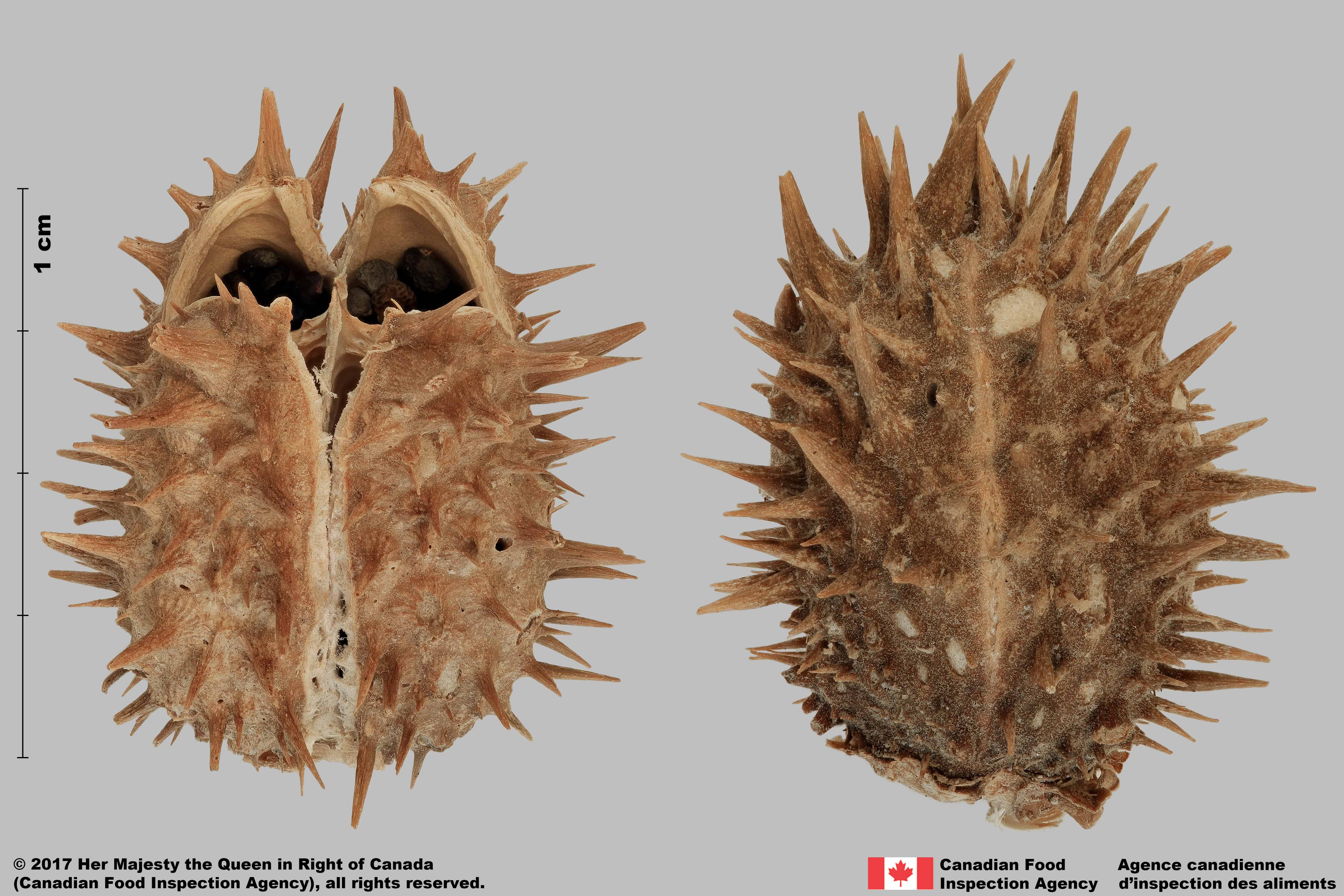
Datura stramonium
Solanaceae
Datura stramonium
SIMILAR SPECIES
ESPÈCES SEMBLABLES
Datura stramonium
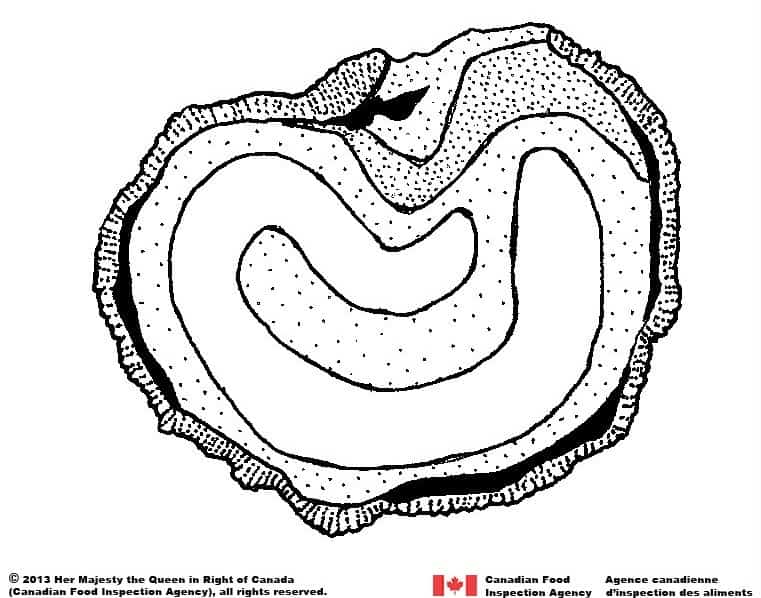
Datura stramonium
Solanaceae
Jimsonweed (Datura stramonium) seed, cross-section
Need ID Help?
Besoin d’aide pour l’identification?
Reference(s)
Référence(s)
Centre for Agriculture and Bioscience International (CABI). 2017. Invasive Species Compendium, CAB International, Wallingford, UK. https://www.cabidigitallibrary.org/journal/cabicompendium Accessed April 25, 2017.
Darbyshire, S. J. 2003. Inventory of Canadian Agricultural Weeds. Agriculture and Agri-Food Canada, Research Branch. Ottawa, ON.
Global Biodiversity Information Facility (GBIF) Secretariat. 2022. https://doi.org/10.15468/39omei Accessed via https://www.gbif.org/species/2930922 Accessed December 29, 2022.
U.S. Department of Agriculture-Agricultural Research Services (USDA-ARS). 2017. Germplasm Resources Information Network (GRIN), https://npgsweb.ars-grin.gov/gringlobal/taxon/taxonomysearch Accessed April 25, 2017.
U.S. Department of Agriculture-Natural Resources Conservation Service (USDA-NRCS). 2022. The PLANTS Database. National Plant Data Team, Greensboro, NC USA. http://plants.usda.gov Accessed December 29, 2022.



